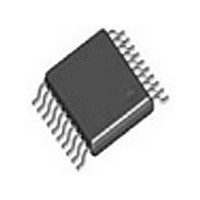LM4867MTE National Semiconductor, LM4867MTE Datasheet - Page 19

LM4867MTE
Manufacturer Part Number
LM4867MTE
Description
Manufacturer
National Semiconductor
Datasheet
1.LM4867MTE.pdf
(28 pages)
Specifications of LM4867MTE
Operational Class
Class-AB
Audio Amplifier Output Configuration
2-Channel Stereo
Output Power (typ)
3W
Audio Amplifier Function
Headphone/Speaker
Total Harmonic Distortion
0.30%%
Single Supply Voltage (typ)
3/5V
Dual Supply Voltage (typ)
Not RequiredV
Power Supply Requirement
Single
Unity Gain Bandwidth Product (typ)
3.5MHz
Rail/rail I/o Type
No
Power Supply Rejection Ratio
67dB
Single Supply Voltage (min)
2V
Single Supply Voltage (max)
5.5V
Dual Supply Voltage (min)
Not RequiredV
Dual Supply Voltage (max)
Not RequiredV
Operating Temp Range
-40C to 85C
Operating Temperature Classification
Industrial
Mounting
Surface Mount
Pin Count
20
Package Type
TSSOP EP
Lead Free Status / Rohs Status
Not Compliant
Available stocks
Company
Part Number
Manufacturer
Quantity
Price
Part Number:
LM4867MTE
Manufacturer:
NS/国半
Quantity:
20 000
Application Information
In order eliminate “clicks and pops“, all capacitors must be
discharged before turn-on. Rapidly switching V
allow the capacitors to fully discharge, which may cause
“clicks and pops“.
NO LOAD STABILITY
The LM4867 may exhibit low level oscillation when the load
resistance is greater than 10kΩ. This oscillation only occurs
as the output signal swings near the supply voltages. Pre-
vent this oscillation by connecting a 5kΩ between the output
pins and ground.
AUDIO POWER AMPLIFIER DESIGN
Audio Amplifier Design: Driving 1W into an 8Ω Load
The following are the desired operational parameters:
The design begins by specifying the minimum supply voltage
necessary to obtain the specified output power. One way to
find the minimum supply voltage is to use the Output Power
vs Supply Voltage curve in the Typical Performance Char-
acteristics section. Another way, using Equation (8), is to
calculate the peak output voltage necessary to achieve the
desired output power for a given load impedance. To ac-
count for the amplifier’s dropout voltage, two additional volt-
ages, based on the Dropout Voltage vs Supply Voltage in the
Typical Performance Characteristics curves, must be
added to the result obtained by Equation (8). The result is
Equation (9).
The Output Power vs Supply Voltage graph for an 8Ω load
indicates a minimum supply voltage of 4.6V. This is easily
met by the commonly used 5V supply voltage. The additional
voltage creates the benefit of headroom, allowing the
LM4867 to produce peak output power in excess of 1W
without clipping or other audible distortion. The choice of
supply voltage must also not create a situation that violates
of maximum power dissipation as explained above in the
Power Dissipation section.
After satisfying the LM4867’s power dissipation require-
ments, the minimum differential gain needed to achieve 1W
dissipation in an 8Ω load is found using Equation (10).
Bandwidth:
Power Output:
Load Impedance:
Input Level:
Input Impedance:
V
DD
≥ (V
OUTPEAK
+ (V
100 Hz−20 kHz
OD TOP
+ V
(Continued)
OD BOT
))
DD
±
1 W
0.25 dB
may not
1 V
20 kΩ
RMS
RMS
(10)
8Ω
(8)
(9)
19
Thus, a minimum gain of 2.83 allows the LM4867’s to reach
full output swing and maintain low noise and THD+N perfor-
mance. For this example, let A
The amplifier’s overall gain is set using the input (R
feedback (R
set at 20kΩ, the feedback resistor is found using Equation
(11).
The value of R
The last step in this design example is setting the amplifier’s
−3dB frequency bandwidth. To achieve the desired
pass band magnitude variation limit, the low frequency re-
sponse must extend to at least one-fifth the lower bandwidth
limit and the high frequency response must extend to at least
five times the upper bandwidth limit. The gain variation for
both response limits is 0.17dB, well within the
desired limit. The results are an
and an
As mentioned in the Selecting Proper External Compo-
nents section, R
amplifier’s lower bandpass frequency limit. Find the coupling
capacitor’s value using Equation (12).
The result is
Use a 0.39µF capacitor, the closest standard value.
The product of the desired high frequency cutoff (100kHz in
this example) and the differential gain A
upper passband response limit. With A
100kHz, the closed-loop gain bandwidth product (GBWP) is
300kHz. This is less than the LM4867’s 3.5MHz GBWP. With
this margin, the amplifier can be used in designs that require
more differential gain while avoiding performance,restricting
bandwidth limitations.
RECOMMENDED PRINTED CIRCUIT BOARD LAYOUT
Figures 8 through 12 show the recommended four-layer PC
board layout that is optimized for the 24-pin LQ-packaged
LM4867 and associated external components. Figures 13
through 17 show the recommended four-layer PC board
layout that is optimized for the 24-pin MTE-packaged
LM4867 and associated external components. Figures 18
through 20 show the recommended two-layer PC board
layout that is optimized for the 20-pin MT-packaged LM4867
and associated external components. These circuits are de-
signed for use with an external 5V supply and 4Ω speakers.
These circuit boards are easy to use. Apply 5V and ground to
the board’s V
speakers between the board’s −OUTA and +OUTA and
OUTB and +OUTB pads.
i
) resistors. With the desired input impedance
DD
f
is 30kΩ.
1/(2π*20kΩ*20Hz) = 0.397µF
i
and GND pads, respectively. Connect 4Ω
and C
f
H
f
= 20kHz x 5 = 100kHz
L
i
= 100Hz/5 = 20Hz
create a highpass filter that sets the
C
R
i
f
≥ 1/(2πR
/R
i
VD
= A
= 3.
VD
i
/2
f
L
)
VD
VD
, determines the
= 3 and f
www.national.com
±
±
0.25dB
0.25dB
i
) and
(12)
(13)
(14)
(15)
(11)
H
=












